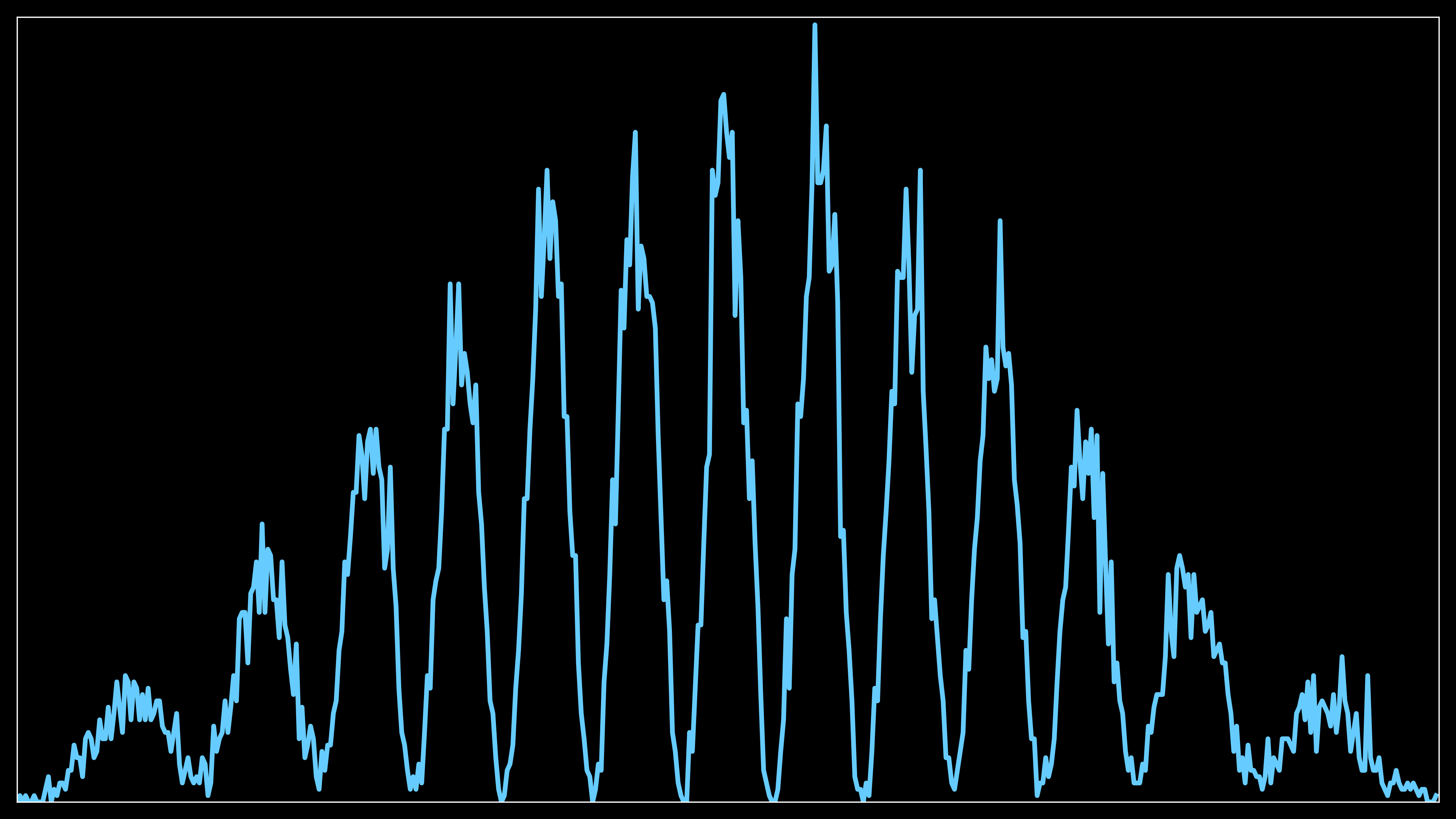[LinkedIn post] Simulating electron beam interference in the double-slit experiment
I’m excited to share the completion of my electron beam simulation through a double-slit barrier, an experiment famously demonstrating wave-particle duality, as for example in the Hitachi double-slit experiment.
This simulation, built on my previous 2D Schrödinger equation solver, consists of three programs:
-
2D Schrödinger Equation Simulation: A wavepacket is propagated through the double slit using the time-dependent 2D Schrödinger equation, simulating the quantum wave dynamics of electrons.
-
Probability Density Accumulation: The probability density of the wavepacket is recorded on a screen placed beyond the double slit, capturing the likelihood of electron detection at various points.
-
Electron Beam Impact Pattern: Using the accumulated probability density, the impact pattern of thousands of electrons on the screen is visualized, demonstrating the interference pattern characteristic of electron beams. The visualization also includes the collapse of the wavefunction as each electron impacts the screen. While the horizontal direction reveals interference fringes, the vertical distribution is uniform due to diffraction primarily occurring in the plane of the slits, justifying the assumptions of the 2D simulation.
As the number of electrons increases (from 15,000 to 150,000), the fringes become sharper and more defined, resulting in a clearer visualization of the interference pattern without altering the overall distribution.
For further insights, a demonstration video is available on YouTube (here), and a more detailed explanation can be found on my website (here). The full codebase is publicly available on GitHub (here).
#QuantumMechanics #Physics #Simulation #SchrödingerEquation #QuantumTunneling #ComputationalPhysics #Python





You can access the original post on LinkedIn here.